Being Confronted by Cambodia’s Painful Past
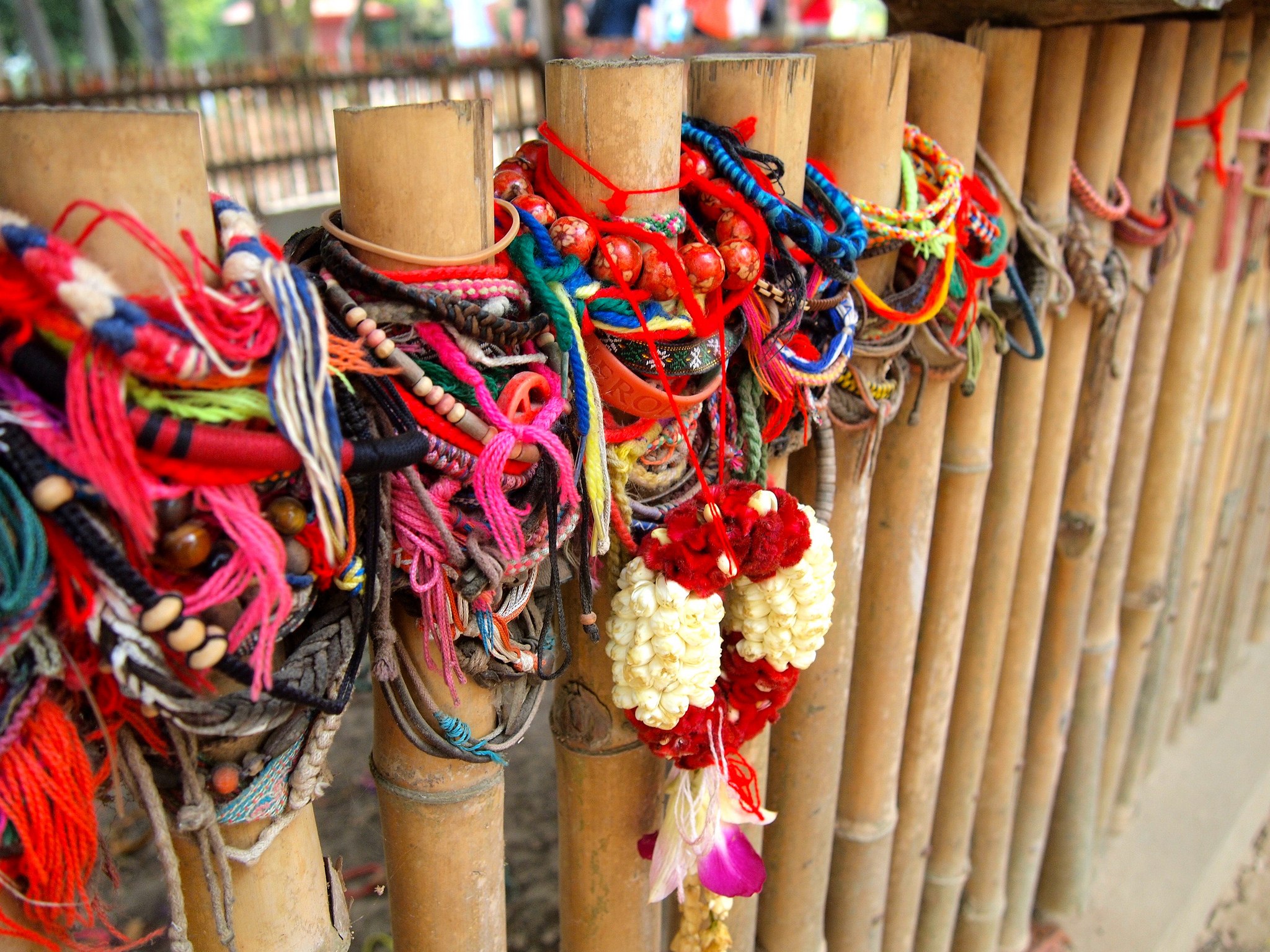
Throughout the course of history, people have done horrible things to other people.
We have invaded, pillaged, destroyed, and claimed other lands. We have raped, tortured, enslaved, and killed other people. For as long as we have been on the earth, humans have been doing terrible things to one another. No country or race or class is innocent if you look back in the history books.
But it's one thing to read about the unspeakable cruelty humans are capable of in books.
It's another entirely to be confronted by it face to face.
It's an eerie feeling, walking over graves. Cemeteries always sort of creep me out because of that.
But the feeling changes to abject horror and disgust when the graves turn into mass graves, and you begin to learn about how people came to find themselves in them.
Before my trip to Cambodia, I knew a little bit about Pol Pot and the Khmer Rouge and the genocide and associated starvation that claimed the lives of roughly 3 million people between the years of 1975 and 1979. But simply knowing that more than 1/3 of Cambodia's population died in the span of 4 years didn't mean I was prepared to be confronted by it.
Genocide is never a comfortable topic; never something that we WANT to be confronted by. But, sometimes I think we need to be.
And a visit to the Killing Fields at Choeung Ek is certainly confronting.
During the reign of the Khmer Rouge in the 1970s, upwards of 20,000 people lost their lives at this site alone. At one time, Choeung Ek was a quiet Chinese cemetery. Today, it is a reminder of the harsh reality of genocide.
Throughout Cambodia, there are at least 343 of these “killing fields.” Some were actual fields. Others were caves or orchards or riverbanks — anything out of the way that would make a suitable site for systematic slaughter.
Ol' Pol Pot was a messed up ruler — as most rulers who incite genocide tend to be. He was so obsessed with the idea that his people would revolt against him that he decided getting rid of them was a better option than letting them potentially decide they would be better off without him. Over the span of 4 years, the Khmer Rouge gathered up millions of people — usually educated ones — and sent them to “New Houses” or “Training Centers.”
These of course were just code names for killing fields or facilities where the people would be beaten to death or near-death with iron bars or wooden clubs (because their lives were not worth the cost of bullets) and then shoved into mass graves. Some of them were still alive when they were thrown in.
Women would watch their babies be beaten against trees, and then would be raped to within inches of their lives before being thrown into the pits, too.
All because one man was afraid of his own people.
Our guide for the day — who lived through this horror — explained how the “educated” people were tracked down. Doctors, teachers, lawyers and anyone in a profession that obviously required an education were the first people targeted. Then it was people who wore glasses (since they could probably read), people who spoke more than one language, and people who had smooth hands or pale skin (since they probably didn't work out in the fields). If that sounds crazy to you, it's because it was.
Roughly 1.5 million people were sentenced to death this way.
But millions more died of starvation during the same period. Along with hunting down educated people, the Khmer Rouge emptied cities and sent people to work in the fields at glorified slave labor camps. There was never enough food, and people suffered an incredible amount. Our guide lost his father as well as 3 siblings to starvation during the reign of the Khmer Rouge, and remembers eating everything from bugs to dirt in order to stay alive.
The true horror? Most Cambodians over the age of 40 alive today can tell similar stories.
Walking through Choeung Ek was like walking through a nightmare. Sure, it was sunny. But then our guide would point out bones poking up out of the dirt, or perhaps a few human teeth just lying in the grass. Each time it rains here, more things — bones, teeth, bits of clothing — are exposed. There are piles of these things everywhere, like grotesque memorials to the dead.
And then there's the gigantic, ornate stupa, filled with the bones of about 8,000 people whose bodies were exhumed from mass graves at this site a few decades ago. So many bones. So many lives lost for no good reason.
The bodies still in the earth at this particular killing field are mostly those of political prisoners, many of which were held at the Tuol Sleng prison and detention center in Phnom Penh.
This prison — along with many others like it — were known as “Re-education Centers” during the Khmer Rouge era. Really, though, they were just torture facilities. Prisoners (AKA suspected educated people) would be kept here in appalling conditions and interrogated regularly. The goal? To get them to name names — their family members, people they worked with, etc. Their captors would promise their release and a new life at a “New House” if they talked. Of course, once they did (or if they didn't), they were just sent to the killing fields.
Visiting Tuol Sleng (which literally translates to the “poison hill”) was no less confronting than visiting the killing fields. It was important, though, to understanding how the genocide was carried out — and how the aftermath still affects people in Cambodia today.
At Tuol Sleng, two thin and bent old men can often be found selling books — autobiographies — that describe their time at Tuol Sleng and how they were able to survive. These men are given nothing by the government; after being tortured and starved for years, they now rely on visitors taking pity on them to make a living.
It's just one hint at the state of Cambodia's current political landscape that our guide pointed out to us. He also pointed out that, even though Pol Pot was eventually chased from power, many Khmer Rouge soldiers and officers still hold positions in Cambodia's government today. Add to this the fact that an entire generation of educated people (not to mention their families) was wiped out, and it makes for a fairly scary state of affairs today in Cambodia.
As we entered Tuol Sleng, our guide told us that we could ask questions during the tour, but instructed us to refrain from asking anything about politics.
“There are ears in the walls here,” he said.
We all learn about the Holocaust in school; about how horrible and evil it was. But I don't remember learning nearly as much about the Cambodian genocide. By all accounts, it was just as brutal as the Holocaust; millions of people were put to death on orders from one crazy man. A whole generation was wiped out. And it happened more recently than WWII — so recently that there are still many survivors of the Khmer Rouge years alive in Cambodia today.
So why don't more people know about it?
The answer, of course, is complex. For starters, the U.S. actually supported Pol Pot for quite a long time because, even though he was crazy and there were rumors that he was committing terrible crimes against his own people, he was very anti-Vietnam. And this was at a time when the U.S. was fighting a war with Vietnam and looking for allies.
It's disgusting, really, to think that genocide could ever be supported. But it's actually happened more times than most people realize.
And it will probably continue to happen unless we educate ourselves better.
Visits to places like the Killing Fields and Tuol Sleng are not pleasant; being confronted by this type of human cruelty is never a comfortable thing. But I think it's SO important to be aware of why and how and when this happened, so that we might be able to open our eyes to similar things happening in the future and speak up about them.
Educate yourself, even if it means subjecting yourself to uncomfortable truths every once in a while.
Heading to Phnom Penh and interested in visiting these sites to learn more about them? Consider booking a tour with a company like Urban Adventures. Their Phnom Penh's Past tour is essentially what I wrote about here.
Would you visit “dark” places like this in Cambodia?
*Note: I visited these sites as part of a complimentary tour of Vietnam and Cambodia with Intrepid Travel. I am SO glad that this half-day tour was included during our time in Cambodia, because you really can't understand Cambodia without visiting these places, sad and disturbing as they are.
If you're interested in the Cambodia portion of this same trip, check it out here.

Amanda Williams is the award-winning blogger behind A Dangerous Business Travel Blog. She has traveled to more than 60 countries on 6 continents from her home base in Ohio, specializing in experiential and thoughtful travel through the US, Europe, and rest of the world. Amanda only shares tips based on her personal experiences and places she's actually traveled!

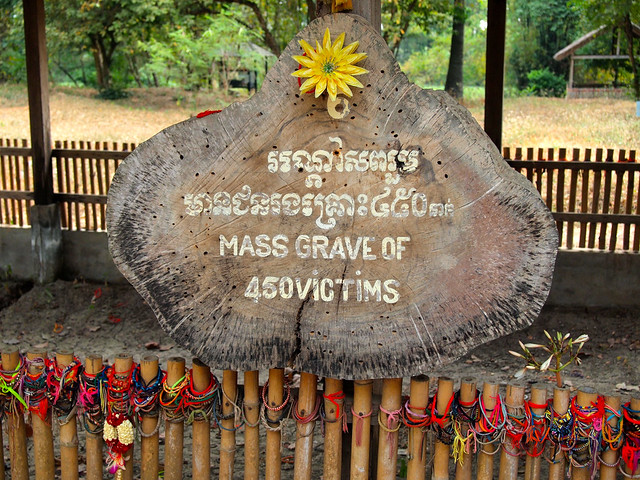
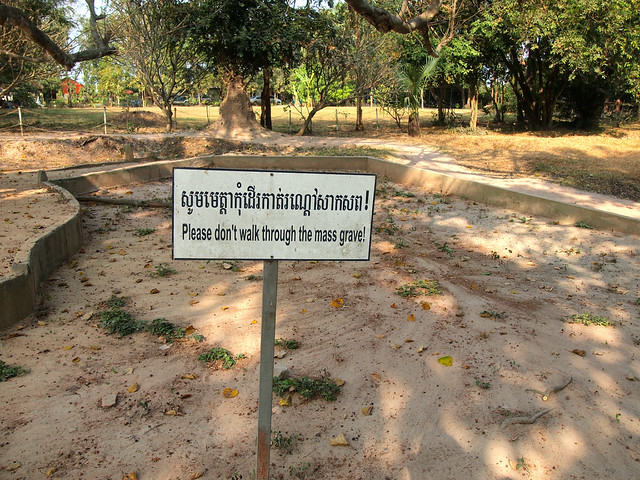
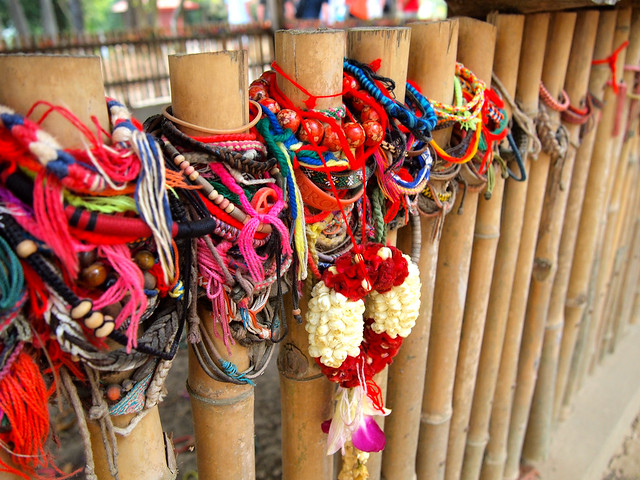
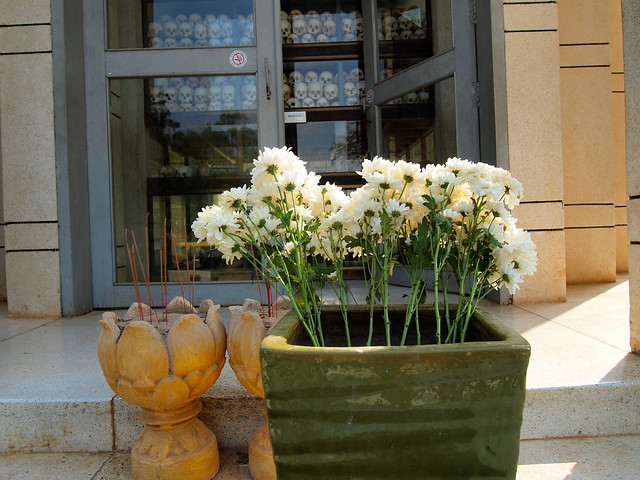
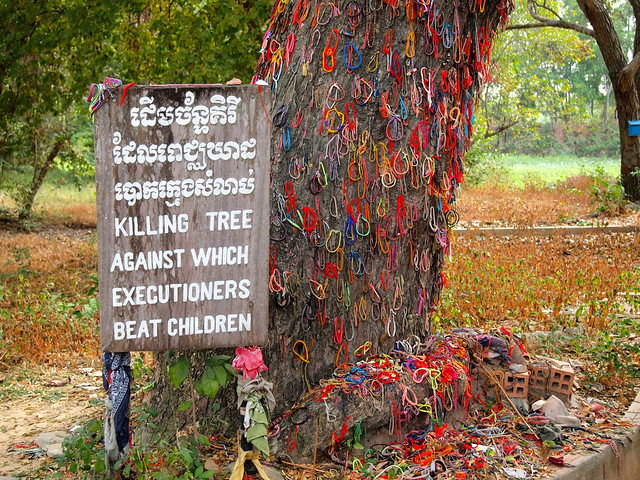
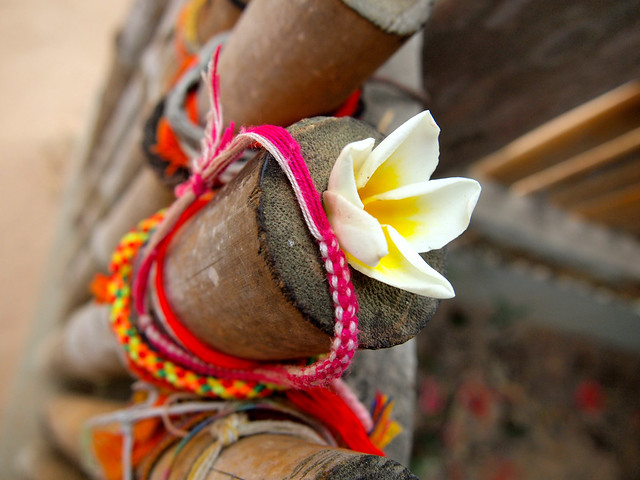
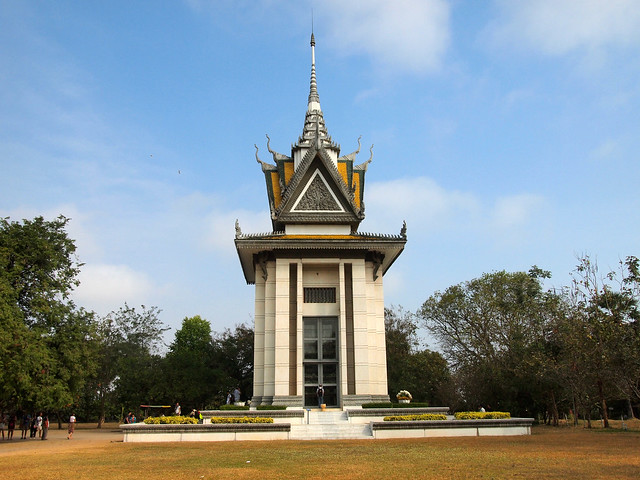
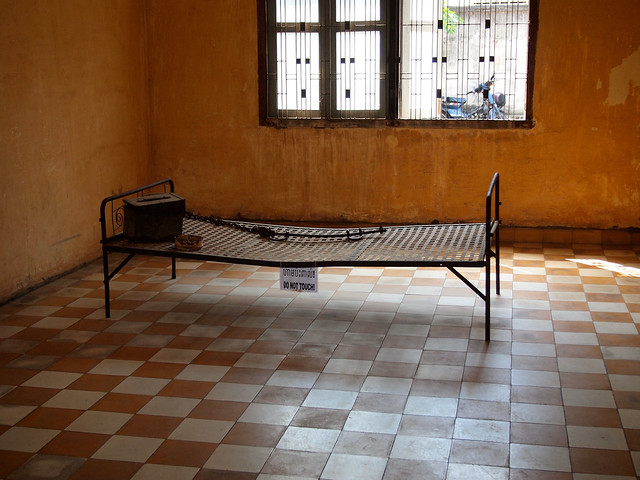
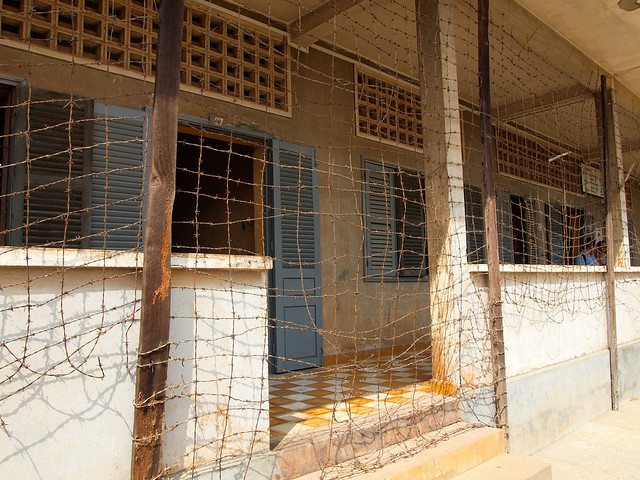
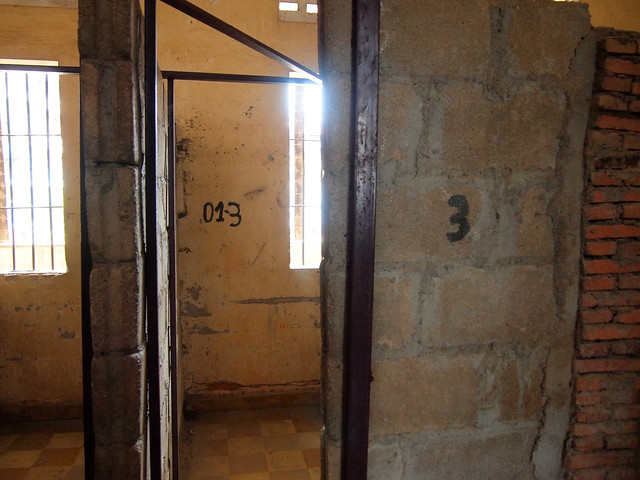
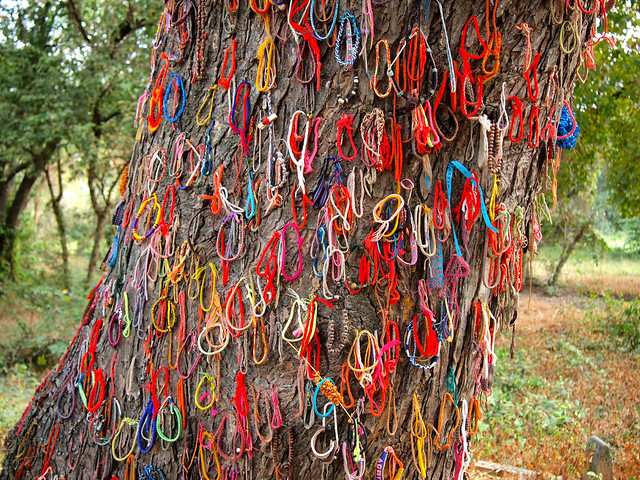

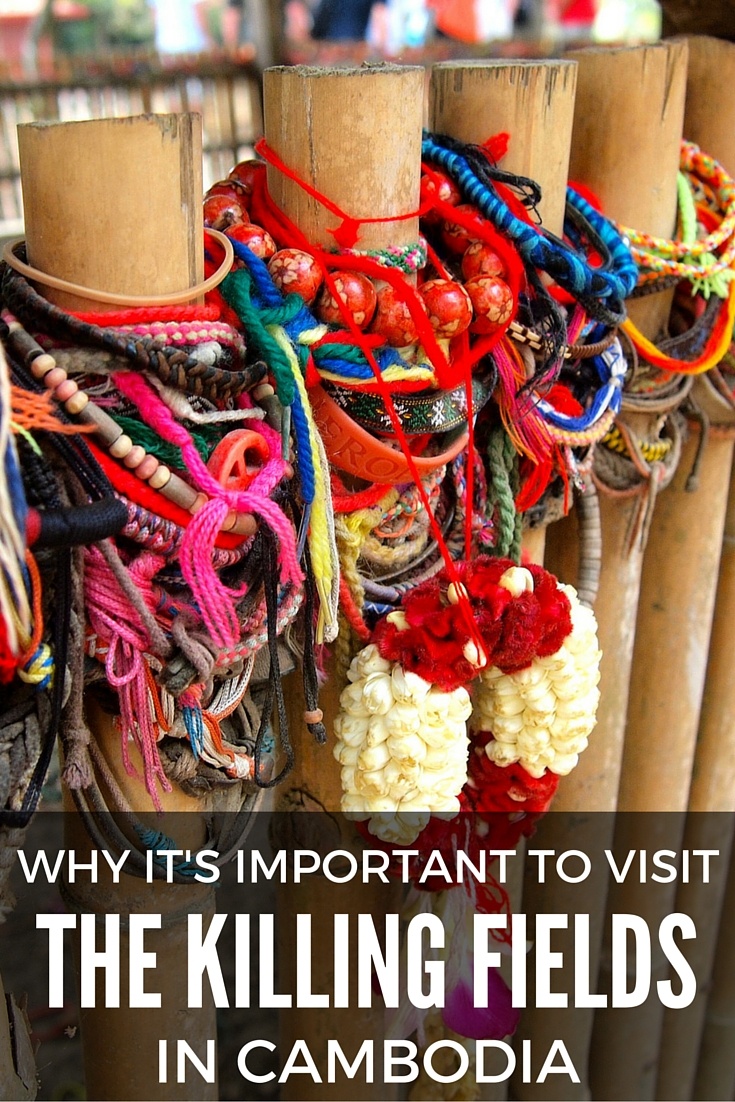
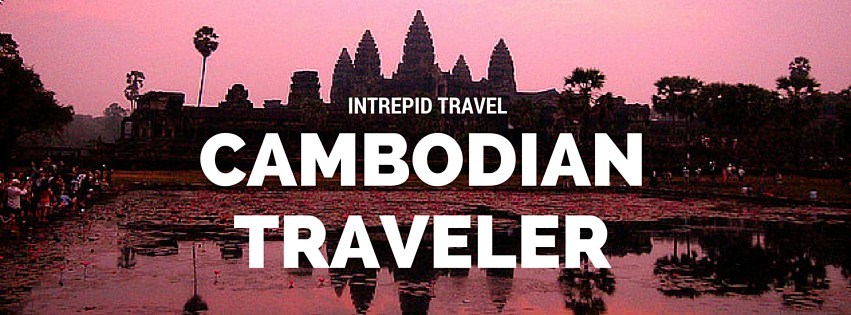









[…] upset me. Likewise, Amanda Williams, blogger at A Dangerous Business, was moved by a trip to the Killing Fields in Cambodia where over a million people were murdered by the Khmer Rouge regime in the late 1970s. “I […]
Hi Amanda,
I recently traveled to Cambodia and explored the Killing Fields and its history for myself. It was quite a harrowing experience and your article here mirrors a lot of how I felt.
I’m currently writing an article with my own take on the necessity of visiting the Killing Fields. In a section of it, I’m exploring why the Cambodian Genocide isn’t given more importance in history syllabi around the world. I’m approaching the subject from a eurocentrism of history standpoint.
I came across your article while doing my own research and I love what you’ve written about US’s silence on the matter because of the ongoing Vietnam War. Is it cool with you if I quote that section in my own blogpost, crediting you of course?
Yes, that would be fine with me!
Dark Tourism is always one of those difficult things to contend with. I know I have visited some painful places myself such as concentration camps in Europe. however I think it’s important to confront these dark times of history so that we can learn from them and not forget them.
I agree, Anwar – these places are not pleasant to visit, but I think it’s important that we do so.
[…] up on some of the history before you go (you’ll be astounded to learn what most Cambodians alive today went through just a few decades ago), and remember to carry your compassion with you. Get to know some of the […]
The history is quite a bit more complicated than you indicated. The Khmer Rouge was armed by the North Vietnamese and subordinate to the North Vietnamese for more than 7 years before they broke relations. The North Vietnamese gave Pol Pot a million bullets in order to take Phnom Penh. North Vietnamese destroyed the airport in Phnom Penh. Khmer Rouge leader Ieng Sary was even in Hanoi when Pol Pot took power. The North Vietnamese even congratulated the Khmer Rouge when they took power in 1975. North Vietnam started the fire in Cambodia and ironically had to put out the fire as well. Sadly, the potential for exactly the sort of tyrant seen in Cambodia was precisely the reason the U.S, South Vietnam, and Laos tried to resist the despots in Hanoi who armed the Khmer Rouge. Today Vietnamese line up by the thousands for the opening of Starbucks and McDonald’s in Vietnam. The Southerners and Northerners still don’t like each other. The poor received nothing from the revolution and today Capitalism is King in both Vietnam and Cambodia. Today the rulers who fought against corruption and overthrew the bourgeoise are now the ones driving around in Range Rovers while living in the luxurious villas the confiscated from the rich. Hi Chi Minh would be turning over in his grave if he saw Vietnam today. As for Pol Pot, there’s a new casino being build just a short distance from his grave.
It’s all so complicated in that part of the world, you’re right. I wrote a more in-depth post about Cambodia (and some of the confusing politics) here: https://www.dangerous-business.com/2014/04/thoughts-cambodia/
[…] Being Confronted by Cambodia’s Painful Past […]
Thanks for sharing your feelings at the Killing Fields. I recently read that as much as 60% of people in Cambodia have PTSD and there is evidence to show that new generations are actually inheriting the PTSD from their parents. Something I’ve been asking myself a lot lately is how our country can help Cambodia, who is still struggling after this genocide, and I know it’s not pumping in foreign aid money. I’m reading a book called Cambodia’s Curse, have you heard of it? If you’re interested in the history of the country and the current corruption I highly recommend checking it out.
That’s a terribly scary statistic! But I can believe it.
I have not heard of that book, but I’ll have to check it out. I’m working on a post about my thoughts on Cambodia and tourism and the corruption and how it’s all related. I agree with you that pumping in foreign aid money (which doesn’t seem to actually be going to aid) is not the answer. But I also don’t feel that increased tourism development is the answer (which seems to be the next-most-popular option). Such a tricky subject, especially when you look at the countries surrounding Cambodia and see how they are prospering in comparison. It makes me sad. 🙁
Did you have an opportunity while you were there to talk to people about how they have learned to forgive Pol Pot’s inner circle for these atrocities? How does a society recover from something like that? Can you talk more about how this period has affected life in Cambodia today?
I did not have the opportunity to do any in-depth interviews, no, but, honestly, I’m not sure if people have totally “forgiven” what happened. Not yet. Not when it’s so recent and people remember it happening so clearly. And especially not when many members of Pol Pot’s inner circle are still living in freedom and relative wealth, with their neighbors knowing full well what they did 40 years ago.
As for how this period has affected Cambodia today… I think it affected just about every aspect of life in the country, and is still influencing it. There’s still plenty of shady stuff going on in Cambodia, and some people I talked to are very unhappy with the current government. But because it is so corrupt, there is little they can do about it.
I’ll be writing a post in a week or so about my thoughts on Cambodia as a whole. You should read that when it’s published!
This is insane! I am horrified! Horrified that America would protect this, horrified that no one knows about it, horrified that its so recent. I really do wonder how such things can happen, after so much that we know now. But I guess your first paragraph really summed that up. Well written Amanda, you did this situation a good deed in your article! I will certainly be sharing this on.
This place is making my “bucketlist” I feel sometimes, that these things need to be seen so we can have more compassion and hopefully stop such horrible things happening.
I’m glad that you agree that it’s important to visit these places and tell other people about them!